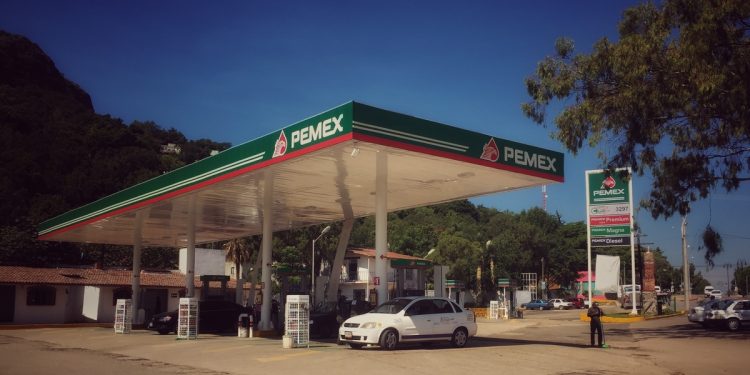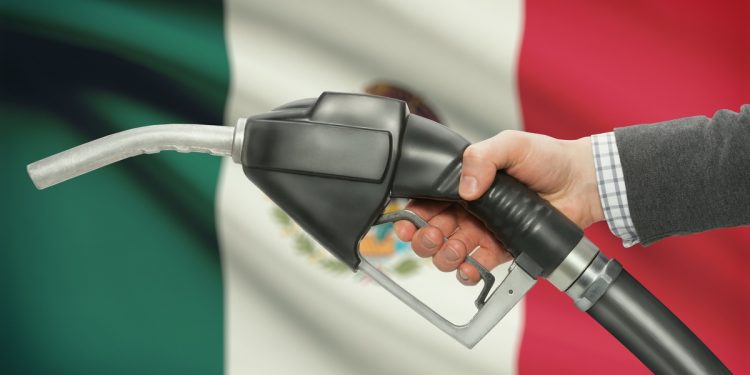In December 2017, the Mexican government completed the liberalization of gasoline prices in the regions of the country that were still subject to price caps, and so 2018 started out with what was essentially a ‘free market’ for fuel pricing.
Although there’s been no repeat of the big 20%-plus jump in pump prices like the one that caused big protests in 2017, gasoline prices across Mexico continued to climb in the first months of the new year: regular gasoline went up 9.2% in the first three months, and premium gasoline rose 6.6%.
Most motorists are probably unaware, or don’t care, that the reason for the increases is different from last year when it was due to a change in government policy. The price rises in the first quarter of 2018 are due to the rising price of oil, and the increases have been tempered a little by the recent appreciation of the peso against the U.S. dollar. (While Mexico is an oil producer, most of the gasoline it consumes is imported because the country does not have sufficient oil refining capacity.) There is a reasonable chance that prices will spike up in the summer if a depreciation of the peso associated with up-coming presidential election jitters coincides with the U.S. “driving season,” when additional demand pushes gasoline prices up.
The changes in Mexico’s energy laws have brought foreign gas stations such as Shell, BP, Mobil, Chevron and several local private brands such as Oxxo to compete alongside the well-known Pemex franchises.
So, did the arrival of new gasoline vendors bring about the much-touted competition that would mean the best prices for fuel? It’s hard to say. There is some variation in price from one service station to another, but it’s difficult to perceive a benefit when energy prices are rising.
For decades, prices were set by the government and were the same everywhere in the country except along the border with the US, where prices would reflect those being charged in US border cities. Now prices can vary from place to place, with factors such as cost of transport and proximity to distribution infrastructure making a difference.
The Energy Regulatory Commission, which is responsible for monitoring prices, has launched a free mobile app — named Gasoapp — for Android and Apple phones that lists prices reported by different gas stations within a chosen radius of the user’s present location. A less practical means of getting the same information that lists gas stations by state and municipality is available on the commission’s web site.
Paying for Fuel: Debit/Credit Card Safety at Gasoline Stations
Historically, buying fuel for vehicles was a cash business in Mexico. However, in recent times, gasoline stations have been rolling-out credit and debit card payments on the forecourt, although it’s wise to make sure you carry some cash with you on your journey in case the station you stop to refuel at doesn’t accept cards yet, or (more likely) their card payment system is not working.
Gasoline stations are one of the most common places where ‘card skimmers’ operate: unscrupulous people who secretly copy (skim) your card’s details and then sell them on the black market. We therefore have two recommendations when you use plastic to pay for your gasoline in Mexico:
1. Use a credit card instead of a debit card. It’s much harder to get your money back from a debit card if the account is compromised by a skimmer; and
2. Never let the card leave your sight. Don’t hand the card out through the car’s window: climb out of your car, hand the card to the attendant personally, and don’t let the attendant walk away with the card. The attendant should bring a portable payment machine to you where you’ll either sign the piece of paper it dispenses or enter your card’s payment PIN on the number pad in lieu of your hand-written signature.
Mexico in your inbox
Our free newsletter about Mexico brings you a monthly round-up of recently published stories and opportunities, as well as gems from our archives.








The energy industry has not been ‘liberalized’ which sounds like a good thing but ‘neoliberalized’ or ‘privatized’ which means the profits of the oil, gas and petrochemical profits in Mexican natural energy resources now will go to the USA, Italy, England and other private investors around the world. Multinational corporations will increasingly control the exploration, extraction, development and sale of Mexican oil with Mexican citizens receiving less and less every day.
‘Liberalized’ could just mean ‘no longer controlled by the government,’–which is true. The matter of energy reform is highly complex, encompassing a great many things like investment required to drill wells in deep water and refining crude oil into usable products. (Gasoline is not a natural resource, it’s a product made from a natural resource.) Who else other than multi-national corporations have the expertise and capability to explore and extract increasingly hard-to-get-at oil fields? What use is crude oil under the Gulf of Mexico to ‘Mexican Citizens’ if they cannot access and process it? Your statement implies that government-controlled oil extraction will deliver better value for Mexico’s people: is Venezuela’s approach a poster-child model to emulate so that “citizens” can receive more? Mexicans will indeed have to share the spoils of future extraction, but without specialized knowledge and tools to undertake that work — things they do not have — they would retain “control” (as you describe it) of a natural resource they cannot access.